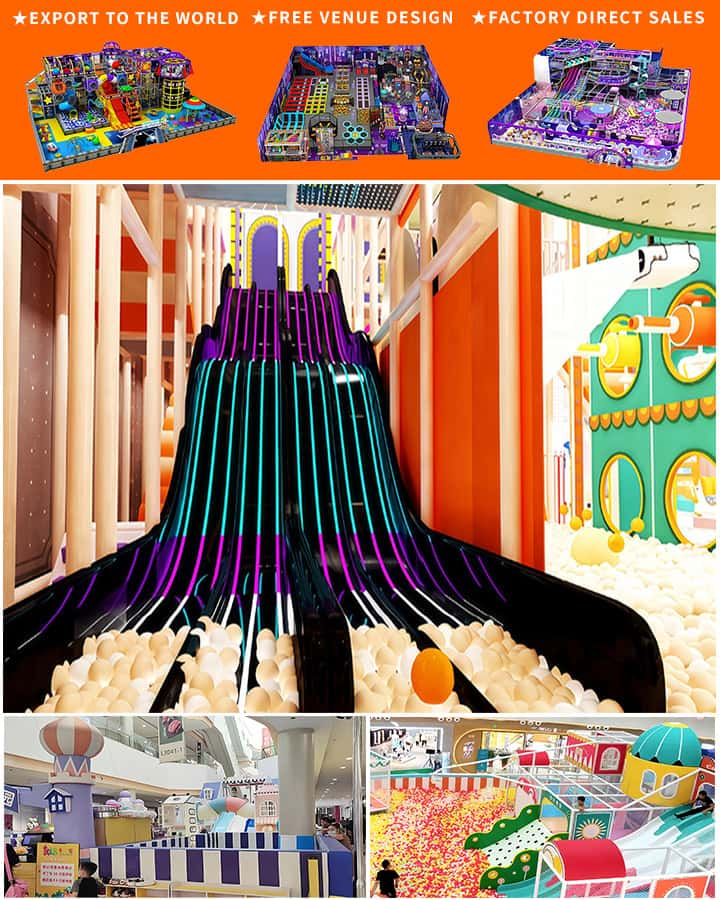In today’s fast-paced world, where screen time often overshadows physical play, indoor playgrounds have emerged as a vital haven for children. They offer a safe, engaging environment that fosters physical activity, social skills, and imagination. Whether you are a parent looking to provide your child with fun-filled adventures or an entrepreneur considering entering the entertainment industry, understanding the average cost of setting up an indoor playground is crucial. This article delves into the various factors influencing these costs, offering insights for all stakeholders.
Factors Affecting the Average Cost of Indoor Playgrounds
1. Location and Space
The geographical location of an indoor playground significantly influences its cost. Prime commercial areas in metropolitan cities tend to be more expensive compared to suburban or rural locations. Additionally, the size of the indoor space plays a vital role. Larger spaces can accommodate more attractions, thus requiring higher initial investments but potentially attracting more visitors.
2. Equipment and Installation
The type and quality of play equipment are central to any indoor playground’s appeal and safety. High-quality, durable materials might come with a higher price tag but ensure longevity and fewer maintenance costs. Installation fees also vary; complex structures like climbing walls or multi-level play areas may require professional installation, adding to the overall expense.
 3. Safety Standards and Compliance
3. Safety Standards and Compliance
Adhering to local health and safety regulations is non-negotiable when opening an indoor playground. These standards ensure the well-being of children and may necessitate additional expenses such as safety mats, fire safety installations, and regular inspections. Non-compliance could lead to hefty fines and damage to the playground’s reputation.
4. Staffing and Operational Costs
Staffing is another significant factor in the operational cost of indoor playgrounds. Depending on the facility’s size and complexity, employing trained supervisors, cleaners, and administrative staff is essential for smooth operations. Moreover, ongoing training programs to maintain high safety standards contribute to recurring expenses.
Average Cost Breakdown
While specific figures can vary widely based on individual circumstances, here’s a rough breakdown of potential costs associated with setting up an indoor playground:
- Lease or Purchase of Space: \(50,000 - \)200,000 per year (depending on location and size)
- Play Equipment and Installation: \(30,000 - \)150,000 (one-time investment)
- Safety Measures and Compliance: \(10,000 - \)30,000 (initial setup + ongoing)
- Initial Working Capital: \(20,000 - \)50,000 (covering marketing, utilities, insurance, etc.)
Financial Considerations for Parents and Investors
For Parents: Understanding the costs involved in operating an indoor playground can help parents make informed decisions about membership plans or occasional visits. Many facilities offer flexible pricing options, including pay-as-you-go, monthly memberships, or family packages, catering to different budgets and preferences.
For Investors: Calculating the return on investment (ROI) requires meticulous planning and market analysis. Conducting surveys to gauge local demand, analyzing competitors, and projecting cash flow scenarios can provide a clearer picture of potential profitability. Collaborating with experienced consultants can further streamline the process, ensuring a well-informed financial decision.
Conclusion
Setting up an indoor playground involves a multitude of costs, from leasing space and purchasing equipment to ensuring stringent safety compliance and maintaining operational efficiency. While the initial investment might seem daunting, strategic planning and a deep understanding of market dynamics can pave the way for a successful venture. For parents, being aware of these costs helps in appreciating the value provided by indoor playgrounds, ultimately contributing to their child’s development and happiness. As the demand for such recreational spaces continues to grow, both operators and patrons stand to benefit from the vibrant, enriching environments these playgrounds create.




